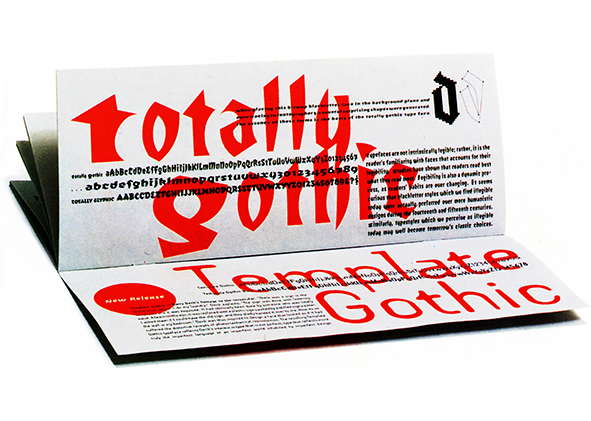Universal Typeface. Innovation without Style
DOI:
https://doi.org/10.19229/2464-9309/5152019Keywords:
innovation, typography, graphic design, history, experimentationAbstract
The Bauhaus (1919-1933) has marked history. This school was animated by some of the most significant Twentieth-century artist-designers, from Gropius to Kandinskij, from Itten to Moholy-Nagy, not related to an unambiguous approach. However, the idea of the Bauhaus, which innervated the debate and the practice of the project in Europe and in the USA (and beyond) for decades, has resulted into some kind of International Style which, in typography, corresponds to the Universal typeface of Herbert Bayer (1925). This article aims to highlight how the universal typeface, that today represents the ‘style’ of Modernity, was in the beginning innovation in its purest: a configuration aimed at effect, to achieve maximum result with minimum effort, both from an economic and technical-productive, and from a functional point of view, readability and visual perception; and how the most interesting aspect is not the form itself – re-proposed, equal to itself, for almost a century – but its underlying design principle.
Downloads
Article Metrics Graph
References
Albers, J. (2009), Interazione del colore – Esercizi per imparare a vedere [orig. ed. Interaction of Color, 1963], il Saggiatore, Milano.
Barbieri, C. (2012), “Combinazioni di pezzi semplici – L’alfabeto universale del Bauhaus | A Combination of Simple Elements: The Universal Alphabet of the Bauhaus”, in Progetto grafico, n. 22, pp. 140-155.
Brüning, U. (1999), “Herbert Bayer”, in Fiedler, J. and Feierabend, P. (eds), Bauhaus, Könemann, Köln, pp. 332-339.
Bürdek, B. E. (1992), Design – Storia, teoria e prassi del disegno industriale [orig. ed. Design – Geschichte, Theorie und Praxis der Produktgestaltung, 1991], Mondadori, Milano.
Gropius, W. (1924), “Breviario per i membri del Bauhaus (abbozzo)”, in Wingler, H. M. (ed.) (1987), Il Buahaus – Weimar Dessau Berlino 1919-1933, [orig. ed. Das Bauhaus, 1962], Feltrinelli, Milano, p. 137.
Hartnett J. P. (2018), Beauty, Form and Function in Typography. [Online] Available at: www.typoday.in/2018/index.html [Accessed 3 March 2019].
Hofmann, A. (1961), Manuel de création graphique, Niggli, Teufen.
Hollis, R. (1994), Graphic Design – A Concise History, Thames and Hudson, London.
Kandinsky, W. (2003), Punto, linea, superfici – Contributo all’analisi degli elementi pittorici [orig. ed. Punkt und Linie zu Fläche, 1926], Adelphi, Milano.
Klee, P. (1959), Teoria della forma e della figurazione [orig. ed. Das bildnerische Denken, 1956], Feltrinelli, Milano.
Itten, J. (2010), Arte del colore – Esperienza soggettiva e conoscenza oggettiva come vie per l’arte [orig. ed. Kunst der Farbe, 1961], il Saggiatore, Milano.
Lupton, E. (2006), Univers Strikes Back. [Online] Available at: www.designwritingresearch.org/free_samples/aTypi_Talk.doc [Accessed 3 March 2019].
Maldonado, M. (1955), Max Bill, Nuova Visión, Buenos Aires.
Müller-Brockmann, J. (1961), Gestaltungsprobleme des Grafikers, Niggli, Teufen.
Olocco, R. (2012), “Un carattere oltre la balcanizzazione | A Typeface Beyond Balkanization”, in Progetto Grafico, n. 22, pp. 108-113.
Quito, A. (2018), “Get Ready for the Bauhaus Centennial Festivities – and it All Starts with These Fonts”. [Online] Available at: qz.com [Accessed 3 March 2019].
Pasca, V. and Pietroni, L. (2001), Christopher Dresser – Il primo industrial designer 1834-1904, Lupetti, Milano.
Porstmann, W. (1920), Sprache und Schrift, Verlag des Vereins Deutscher Ingenieure, Berlin.
Ruder, E. (1967), Typographie - ein Gestaltungslehrbuch, Niggli, Teufen.
Russo, D. (2006), Free Graphics – La grafica fuori delle regole nell’era digitale, Lupetti, Milano.
Shaw, P. and Bain, P. (1998), “Introduction – Blackletter vs. Roman: Type as Ideological Surrogate”, in Shaw, P. and Bain, P. (eds), Type and National Identity, Princeton Architectural Press, New York, pp. 10-15.
Spencer, H. (1969), Pioneers of modern typography, Lund Humphries, London.
Tóth, E. (2018), Design and Visual Culture from the Bauhaus to Contemporary Art, Optical Deconstructions, Routledge, New York-London.
Tschichold, J. (1995), The New Typography – A Handbook for Modern Designers [orig. ed. Die Neue Typographie – Ein Handbuch für zeitgemäss Schaffende, 1928], University of California Press, Berkeley-Los Angeles-London.
Tschichold, J. (2003), La forma del libro [orig. ed. Ausgewählte Aufsätze über Fragen der Gestalt des Buches und der Typographie, 1975], Sylvestre Bonnard, Milano.
Wingler, H. M. (ed.) (1987), Il Buahaus – Weimar Dessau Berlino 1919-1933 [orig. ed. Das Bauhaus, 1962], Feltrinelli, Milano.
Zevi, B. (1974), Poetica dell’architettura neoplastica – Il linguaggio della scomposizione quadrimensionale, Einaudi, Torino.

Downloads
Published
How to Cite
Issue
Section
License
This Journal is published under Creative Commons Attribution Licence 4.0 (CC-BY).
License scheme | Legal code
This License allows anyone to:
Share: copy and redistribute the material in any medium or format.
Adapt: remix, transform, and build upon the material for any purpose, even commercially.
Under the following terms
Attribution: Users must give appropriate credit, provide a link to the license, and indicate if changes were made; users may do so in any reasonable manner, but not in any way that suggests the licensor endorses them or their use.
No additional restrictions: Users may not apply legal terms or technological measures that legally restrict others from doing anything the license permits.
Notices
Users do not have to comply with the license for elements of the material in the public domain or where your use is permitted by an applicable exception or limitation.
No warranties are given. The license may not give users all of the permissions necessary for their intended use. For example, other rights such as publicity, privacy, or moral rights may limit how you use the material.


















































































